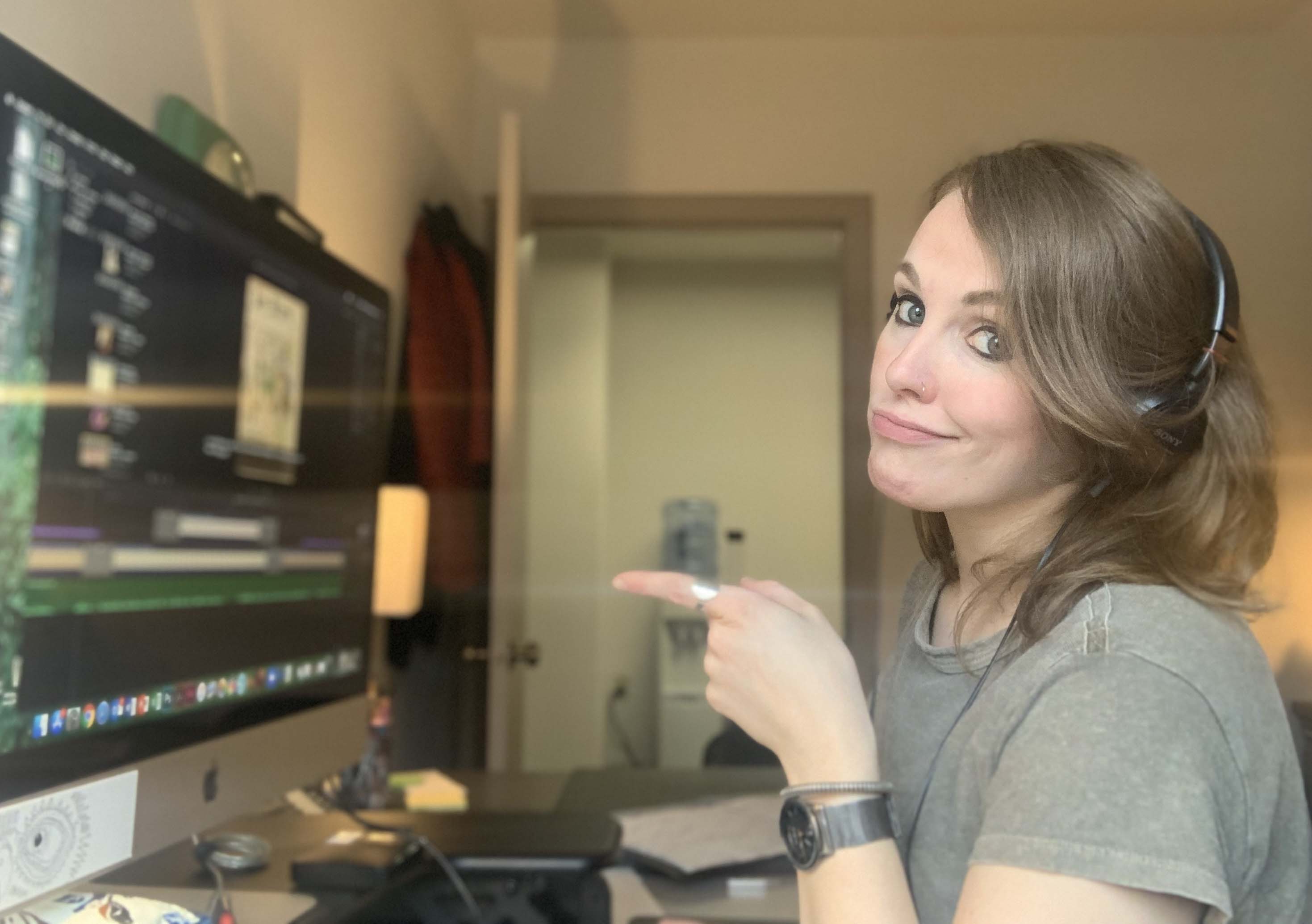
Without public programs or visiting school groups, Catie’s outlets for hamming it up are limited.
Behind the Woodson Art Museum’s app content, Catie is at the computer, turning audio into video. While the Woodson’s YouTube videos and audio-tour app are crafted to offer visitors – both onsite and remote – insights into artworks on view, the creation of the videos themselves presents an educational opportunity all its own.
Listening
Depending on what assets I have at the outset, I often need to research exhibition artworks, write an accompanying audio script, record that narration with coworkers, and then create videos. When I’m lucky, I begin by working with an existing audio file, whether recorded by a generous Birds in Art artist (a shout out to all those who have willingly self-recorded an audio track for the app) or an exhibition’s curator, collector, or both, which was the case for L’Affichomania: The Passion for French Posters. Exhibition curator Jeannine Falino and collector Richard H. Driehaus shared their expertise and enthusiasm for the presentation of Belle Époque posters drawn from the Driehaus Museum’s collection via narrated audio files available to venues presenting L’Affichomania. The provided audio was great; next came the task of selecting what tracks to use and turning them into videos.
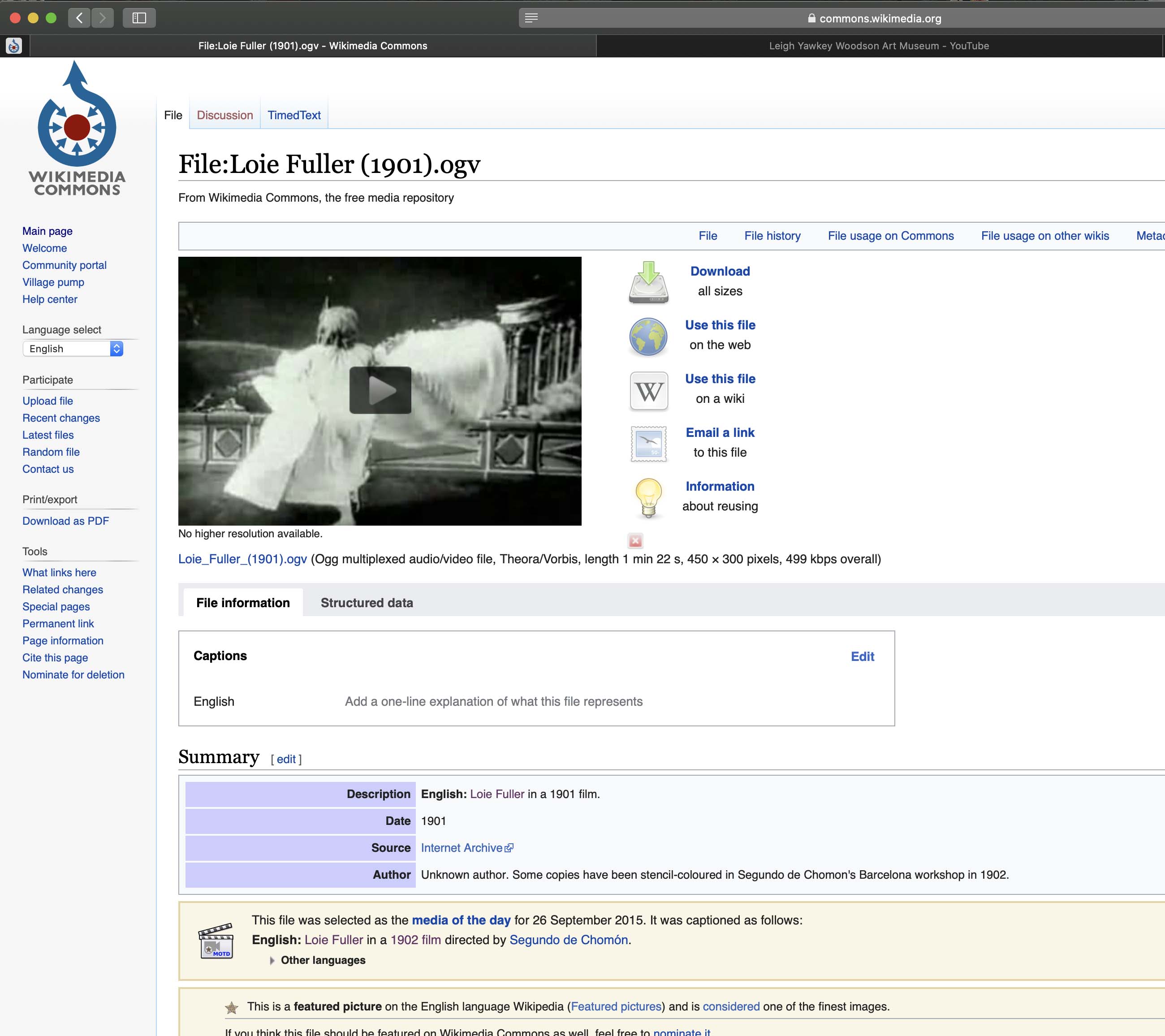 Sourcing Images
Sourcing Images
The availability of copyright-free images to illustrate a video’s narration is often the deciding factor when selecting which audio files to use. Using sites like Wikimedia Commons, I search through on online database of media available in the public domain. The wide distribution and popularity of the posters in L’Affichomania means many of the images are available in museum collections throughout the world, including The Met and National Gallery of Art, which make digital images of their collections available for the public to search, download, and share.
If I can’t find supplemental images that appropriately represent the artwork on view, I step into the Woodson Art Museum galleries to take additional images as needed for video editing.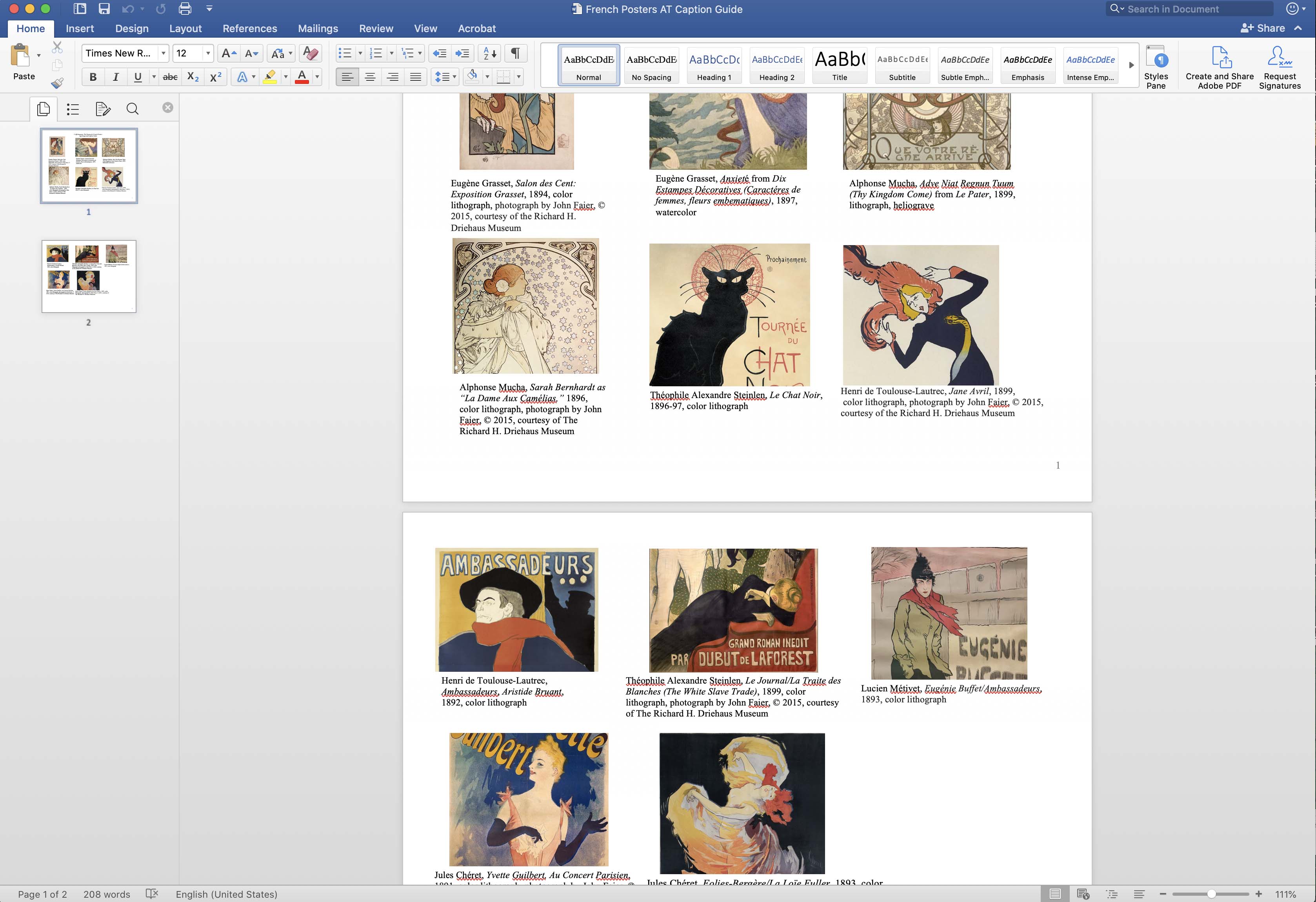
Media and Information
Keeping images and other media files accessible and organized necessitates an external hard drive (after eight years, I’m on my third for the app) filled with folders for each exhibition, where I title, save, and access images and record caption information. An audio tour artwork image/caption guide helps me keep track of appropriately cropped images along with necessary image credit information. Storing these files on an external hard drive also ensures that should I lose a video project I’m working on, I have the resources needed to re-create it without needing to start from square one.
Image Editing
Many of the artwork images and supplemental photographs available are ready to be resized and incorporated into video, but some first require “cleaning up.” I find enhancing and retouching old photographs or removing light reflections from artwork images taken in the gallery to be an enjoyable part of the process, because I look more slowly and carefully at images than I likely would otherwise. The process is also an opportunity for me to consider how to pan over an image – appropriately dubbed the “Ken Burns” effect in Final Cut Pro – to highlight details and how best to reflect the story unfolding in the audio.
Each app video includes a “splash screen,” which functions both as an uploaded thumbnail/preview image on the Museum’s YouTube channel and as the final view as the video concludes. These screens are created by me and the Museum’s graphic designer Rick Wunsch. Working in Photoshop, InDesign, and Adobe Acrobat Pro, artwork images are resized, semi-transparent gradients are added, and exhibition/caption information is added.

Video Editing
Working in Final Cut Pro, I edit audio files as needed for content and clarity. Next, I layer, compose, and adjust a variety of media files to complement a recording. I was especially pleased to find fantastic images along with black-and-white and colorized film clips of dancer Loïe Fuller, which illustrated the narration of Jules Chéret’s lithograph Folies Bergère/La Loïe Fuller.
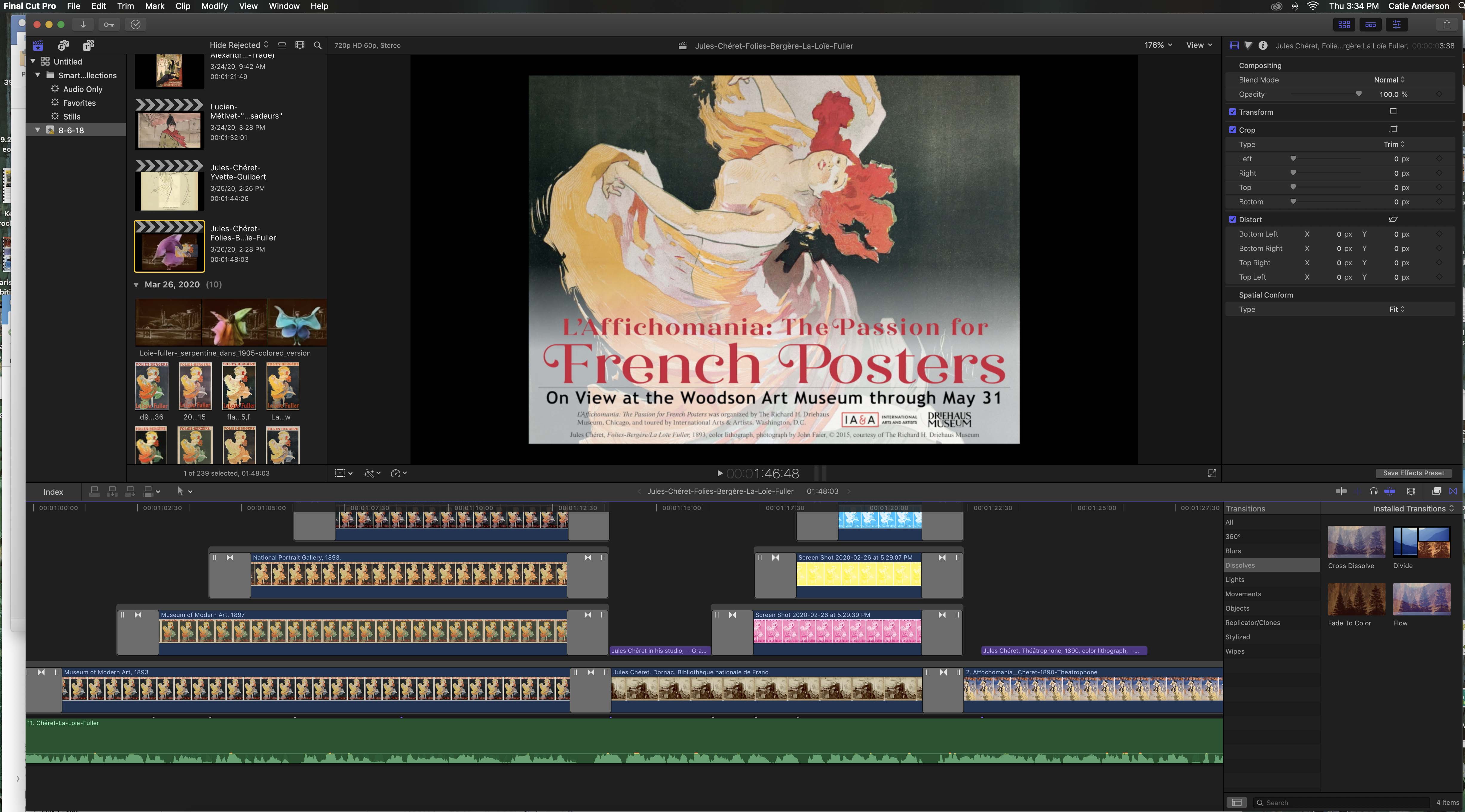
Once a video is “finished,” I export the .mov file to the external hard drive and convert it to an .mp4 file using either Handbrake or Miro Video Converter, so it can be efficiently uploaded to a Dropbox folder where other staff members can review the first cut to see if I need to make adjustments or correct caption typos. Nine times out of ten, I need to make corrections and re-export/upload videos for a second round of reviews; it’s a team effort.
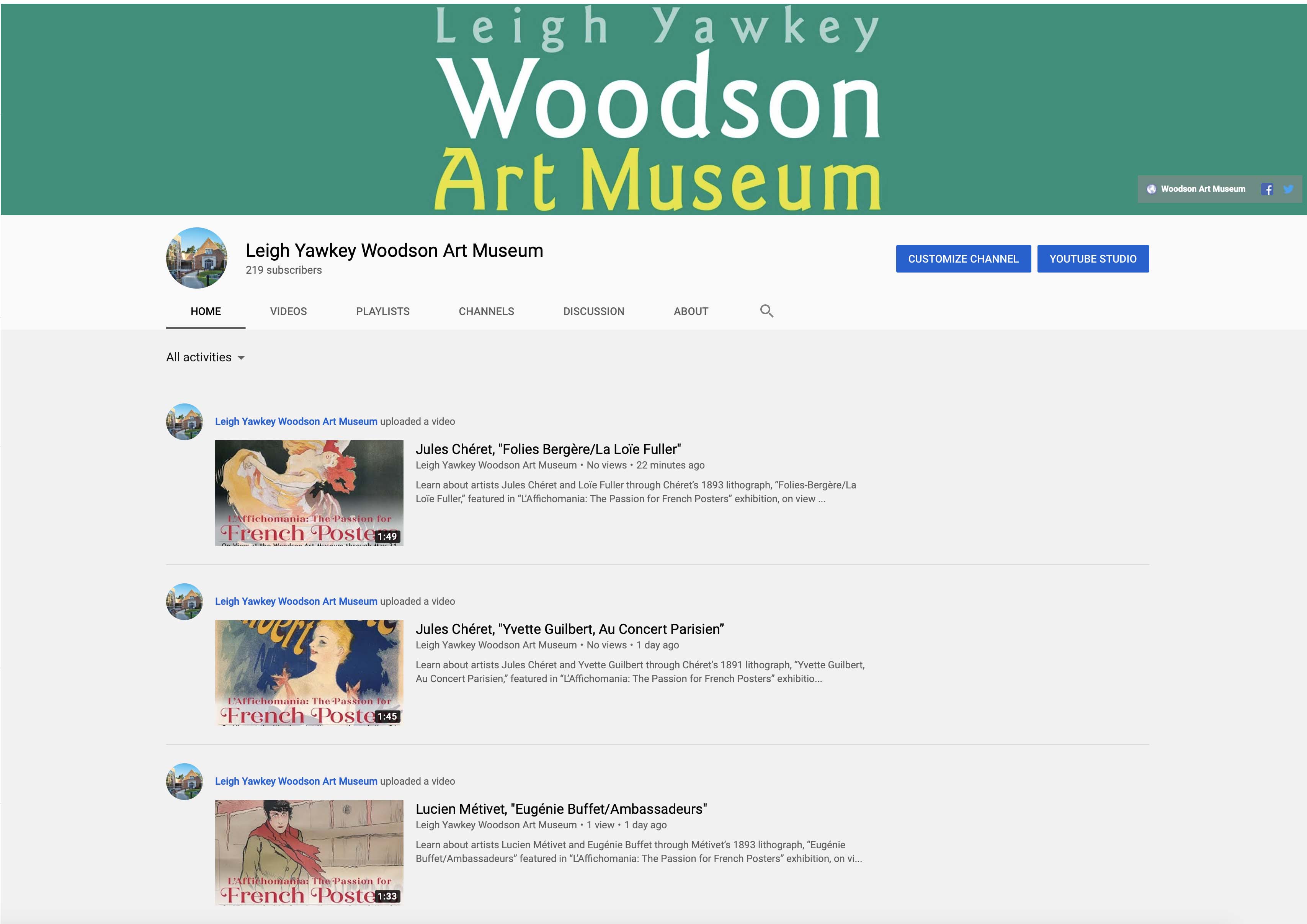
Sharing Content
Thanks to the efforts of our web/app partners at Ontogeny, I’m now able to handle the care and feeding of the Woodson’s app online by labeling, importing, and updating content as exhibitions change. App videos are also uploaded to the Museum’s YouTube channel either as a public media file or an “unlisted” one – for viewing by those only supplied with a direct link – depending on agreements with artists or exhibition organizers.
Graphic designers or professional videographers may have other thoughts and processes. Forgive me; I’m self-taught and having fun. Most important, I hope you enjoy these videos.
Download the Museum’s app and subscribe to our YouTube channel to see new videos. Visit the Museum’s website to explore additional content and share Facebook, Instagram, and Twitter posts for varied virtual views coming to a screen near you.




